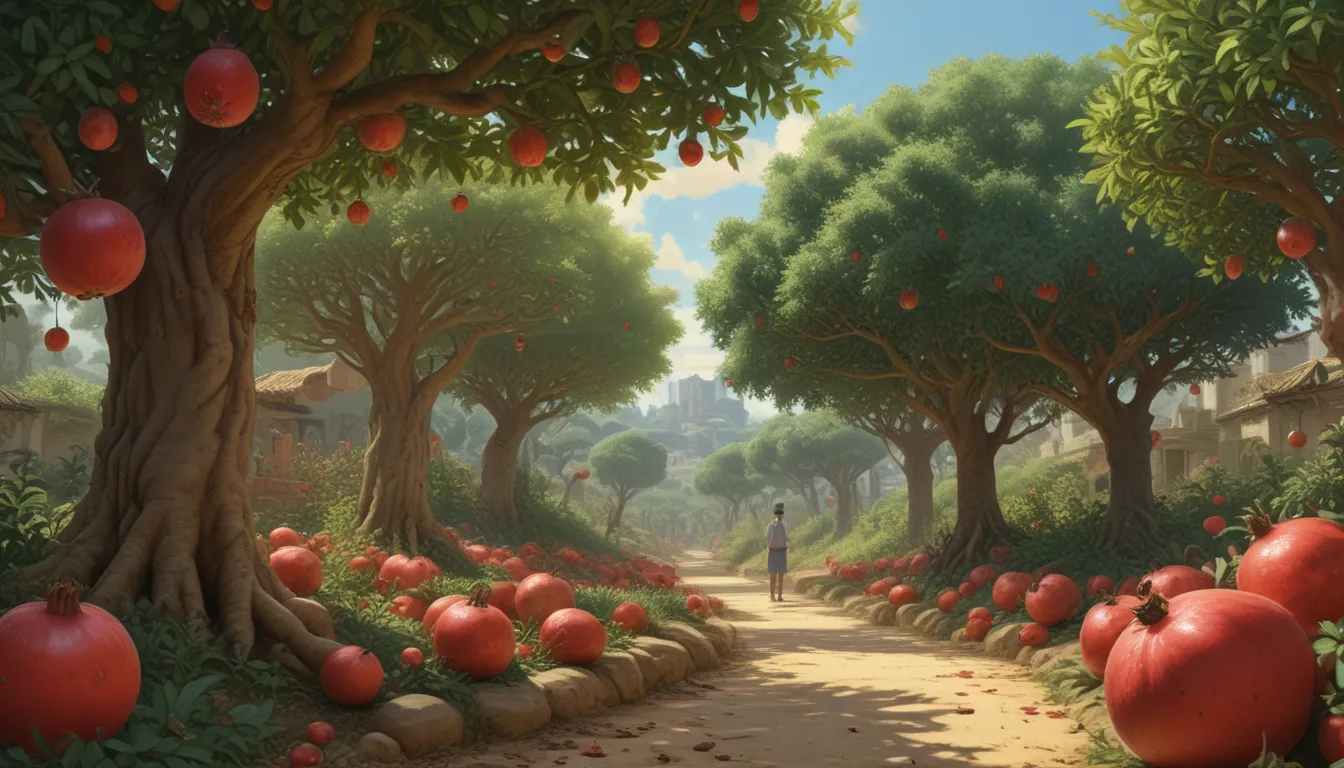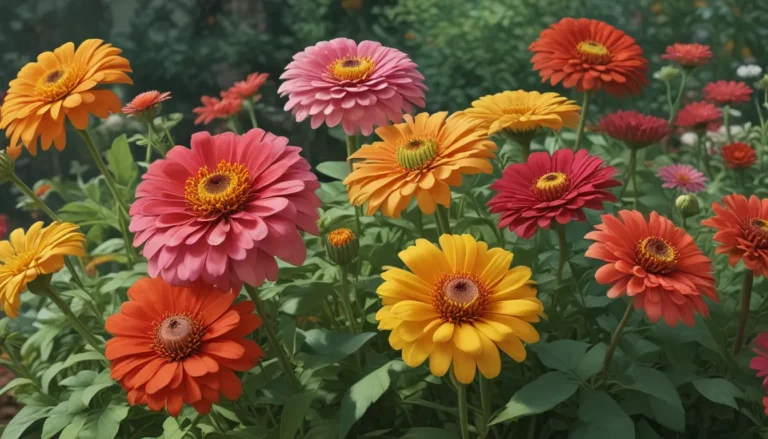Comprehensive Guide to Growing and Caring for Pomegranate Trees

Can you imagine being the first person to stumble upon a pomegranate growing in the wild? What must they have thought, when they found those odd globes hanging from the branches just overhead?
When I think about all of the history that has come before us, especially in the botanical world, my imagination runs wild!
I can’t help but think of those who came before us, spotting a curious new plant, and bringing it home to their family or colleagues to ponder over it.
Maybe it would be delicious. Or maybe it would prove deadly.
That discovery has led to thousands of years of cultivation, with the pomegranate making the rounds from one continent to another as growing numbers of gardeners, orchardists, and hungry people discovered its beauty and its unique flavor.
In this comprehensive guide, we’ll cover everything you need to know about how to grow and care for your own pomegranates. Here’s what’s ahead:
What You’ll Learn
- What Is Pomegranate? – Cultivation and History – Propagation – How to Grow – Growing Tips – Pruning and Maintenance – Cultivars to Select – Managing Pests and Disease – Harvesting – Storing and Preserving – Recipes and Cooking Ideas – Quick Reference Growing Guide
Before you plant those seeds or purchase plants, it’s helpful to take some time to learn about where pomegranates come from and what conditions are ideal for their health, growth, and productivity.
What Is Pomegranate?
In 1725, the species was named Punica granatum by Carl Linnaeus, the Swedish “father of taxonomy,” which translates to “many-seeded apple” or “grainy apple.”
The list of common names for the fruit includes seeded apple, the apple of Grenada, and the French pomme-grenade, which is where the modern name may be derived from in English.
Pomegranates may be either deciduous or evergreen, depending on regional temperatures. While this species has a naturally shrub-like habit, it’s commonly pruned into a tree form.
The fruits, though named after apples, are classified as berries and unrelated to pomes.
Best grown for fruit production in dry and hot regions with summer daytime temperatures in the 70 to 90°F range, pomegranates are suitable for growing in USDA Hardiness Zones 7 to 11.
Cultivation and History
The wild pomegranate originated in the Middle East, and is native to Persia, or modern-day Iran. The history of this fruit is long and fascinating.
Evidence of pomegranate cultivation exists preceding recorded history, in Bronze-Age excavations from as long ago as 3,000 BCE found in Iran and the Himalayan Mountain region.
Artwork has survived from numerous ancient civilizations depicting the fruit as an important part of the cuisine and culture of ancient Persia, Rome, Greece, Egypt, and China. In many places, such as India, it was considered the food of royalty, or at the very least, a luxury item.
In Greek myth, when Persephone is abducted by Hades, the fruit features as a symbol of life and regeneration, as well as marriage.
Persian myth grants the pomegranate powers that are a bit more magical in nature. Brought to Sicily and southern Spain with Muslim conquerors, its popularity spread to other parts of the world.
Pomegranates were introduced to the United States by way of Spanish conquistadors and traders in the mid-1700s, and over time, came to be cultivated in regions with a hot, arid climate throughout North, Central, and South America, such as parts of modern-day California and Arizona.
Propagation
Like the majority of fruit trees, it’s not best to grow pomegranates from seed if the desired result is a clone of the parent plant.
The easiest way to get started with growing your own pomegranates is to purchase a plant from your local garden center or online.
There are several possible methods to employ, and you can find comprehensive information about each of the best options for home growers in our guide to propagating pomegranates.
How to Grow Pomegranate Trees
The spot you choose for your tree should offer around eight hours of full sun per day.
The soil at the site should be loamy, or a mix of loam and sand, with a pH of 5.5 to 7.0.
For the first year after transplanting, plan to water one to two times weekly depending on the amount of rainfall.
If seasonal low temperatures in your area drop below about 20°F, you’ll need to have a plan for winterizing, or plant a variety that can be grown in a container.
Pomegranates can also be grown more closely together as a hedge, with appropriate pruning to allow for proper airflow.
Growing Tips
- Select a location for planting with full sun exposure and loamy soil, or sandy loam. – Provide supplemental water through the first year of growth, until plants become established. – Be sure to allow adequate spacing between trees and away from structures and other plants.
Pruning and Maintenance
As pomegranates naturally grow in a shrub form, it’s advisable to prune them periodically.
Suckers should be pruned away each year, as they will drain energy from the plant with no benefit. These can also be propagated to start new plants, if you wish.
Plan to prune in late winter to remove any damaged parts and keep the size and shape of the tree or shrub manageable.
Keeping the plant trimmed for shape aids in ease of harvesting as well. It also opens up space in the canopy so light and air can penetrate, keeping the plant healthier and allowing fruits to ripen better.
It’s important to note that if you’re allowing the shrub to grow in its natural form, it may harbor excess humidity, and that can reduce blooming and lead to blossom drop.
Managing Pests and Disease
Pomegranates are less prone to pests and diseases than many types of fruit trees, provided they are planted in a suitable climate.
The list of unwanted guests that you might see is short, and includes the likes of squirrels, aphids, leaf-footed bugs, and leafroller caterpillars.
Diseases that affect pomegranates can be difficult to manage, such as cercospora fungus and heart rot.
Harvesting Pomegranate Fruit
The fruits can take anywhere from five to seven months to ripen and mature. Trees typically produce a harvestable crop starting two to five years after planting.
Fruits that are ripe are characterized by the shape of the pericarp, smoother texture and deeper color of the skin, and heavier weight.
Use a set of sharp garden shears to snip the stems close to the fruit when harvesting.
Storing and Preserving
Pomegranates need to be stored under proper conditions for best results. They’ll generally remain fresh for one to two weeks when kept at room temperature, out of direct sunlight.
Refrigeration is best for long storage, at a temperature between 32 and 40°F.
Arils can be processed to make juice, jam, jelly, or grenadine syrup, all of which can be used immediately or pressure canned for long-term preservation.
Recipes and Cooking Ideas
Young, tender leaves are best for fresh eating in salads and smoothies. Cooked, some growers like to use pomegranate leaves as an alternative to spinach.
Fresh blossoms and leaves that will not be dried or processed in some other way for storage should be used immediately.
Whether sweet or savory, the fruit and the dried spice powder can be used in a variety of dishes, wherever you’re looking to add a punch of sweet-tart flavor.
Quick Reference Growing Guide
- Plant Type: Deciduous fruiting shrub or tree – Water Needs: Low to moderate – Native to: Middle East – Hardiness (USDA Zone): 7-11 – Season: Fall – Exposure: Full sun – Time to Maturity: 3-5 years – Spacing: 10-20 feet – Planting Depth: 1/2 inch (seeds), depth of root ball (transplants) – Height: 15-20 feet – Spread: 15-20 feet – Common Pests and Diseases: Aphids, citrus flat mites; botrytis, cercospora leaf spot, heart rot, powdery mildew, root and collar rot
Conclusion
When a fruit has survived the ages, being cultivated continuously from one generation to the next, you know it’s something special.
In addition to its culinary and ornamental uses, the pomegranate offers so much to explore, from its fruit to its leaves and flowers.
For more information on growing fruit trees in your garden, have a read of these guides next:
- What Are Fruit Tree Guilds? Learn How to Start Your Own – How Far Apart Should I Space Fruit Trees? – How to Prepare Fruit Trees for Winter
If you’ve grown pomegranates before, we’d love to hear about your favorite recipes in the comments below!
With the right care and attention, your pomegranate tree will reward you with delicious, nutritious fruits year after year. Start your pomegranate growing journey today!





